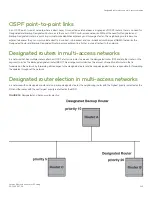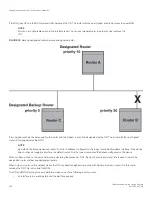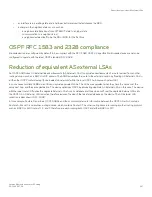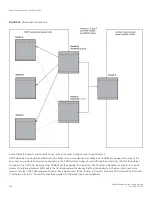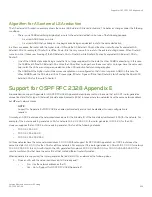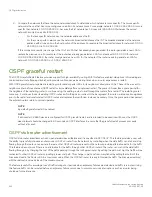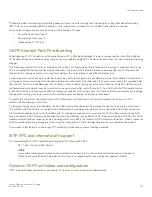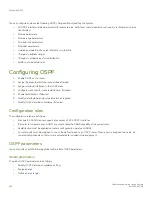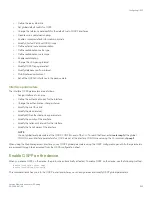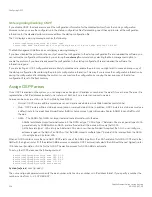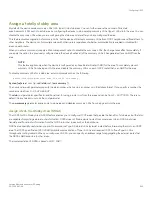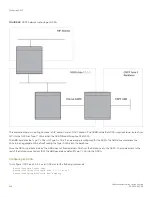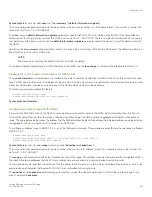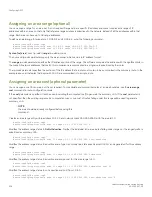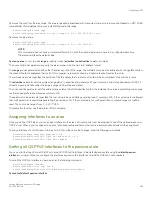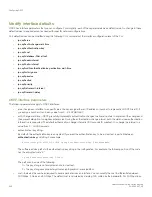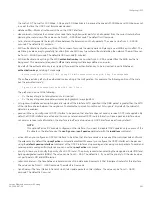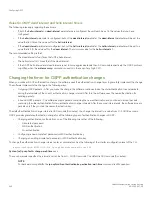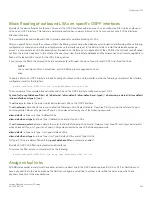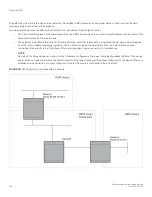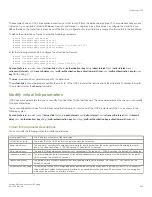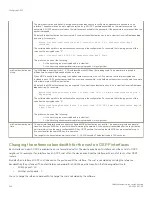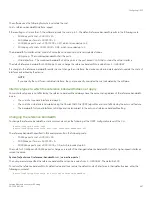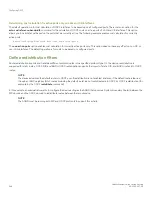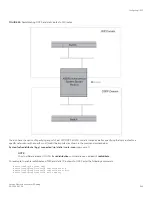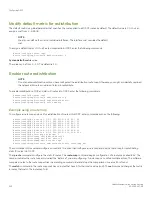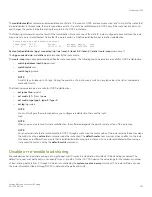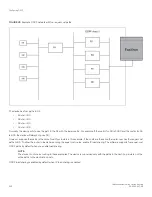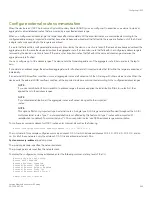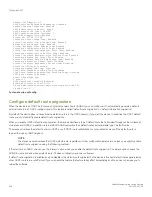
Removes the cost from the area range. The area range will be advertised with computed cost which is the max/min(based on RFC 1583
compatibility) of all individual intra-area routes falling under this range.
device(config)# router ospf
device(config-ospf-router)# no area 10 range 10.1.1.1 255.255.255.0 cost 5
Removes the area range.
device(config)# router ospf
device(config-ospf-router)# no area 10 range 10.1.1.1 255.255.255.0
NOTE
This command does not work in incremental fashion. So both the optional parameters have to be configured each time.
Otherwise it will take the default value.
Syntax:
no area
{
num
|
ip-addr
range
ip-addr ip-mask
[
advertise
|
not-advertise
]
cost
cost-value
}
The
num
and
ip-addr
parameters specify the area number, which can be in IP address format.
The
range
ip-addr
parameter specifies the IP address portion of the range. The software compares the address with the significant bits in
the mask. All network addresses that match this comparison are summarized in a single route advertised by the router.
The
ip-mask
parameter specifies the portions of the IP address that a route must contain to be summarized in the summary route.
The
advertise
parameter sets the address range status to advertise and generates a Type 3 summary link-state advertisement (LSA). If
at least a single route falls under the range, a ranged LSA will be advertised.
The not-advertise parameter sets the address range status to DoNotAdvertise. Neither the individual intra-area routes falling under range
nor the ranged prefix is advertised as summary LSA.
The
cost
cost-value
parameter specifies the cost-value to be used while generating type-3 summary LSA. If the cost value is configured,
then configured cost is used while generating the summary LSA. If the cost value is not configured, then computed range cost will be
used. The cost-value ranges from 1 - 16777215.
To disable this function, use the
no
form of this command.
Assigning interfaces to an area
Once you define OSPF areas, you can assign interfaces to the areas. All router ports must be assigned to one of the defined areas on an
OSPF router. When a port is assigned to an area, all corresponding subnets on that port are automatically included in the assignment.
To assign interface 1/1/8 of Router A to area 10.5.0.0 and then save the changes, enter the following commands.
RouterA(config)# interface ethernet 1/1/8
RouterA(config-if-e10000-1/1/8)# ip ospf area 10.5.0.0
RouterA(config-if-e10000-1/1/8)# write memory
Setting all OSPFv2 interfaces to the passive state
You can set all the Open Shortest Path First Version 2 (OSPFv2) interfaces to the default passive state using the
default-passive-
interface
command. When you configure the interfaces as passive, the interfaces drop all the OSPFv2 control packets.
To set all the OSPFv2 interfaces to passive, enter the following command.
device# configure terminal
device(config)# router ospf vrf A
device(config-ospf-router-vrf-A)# default-passive-interface
Syntax:
[no] default-passive-interface
Configuring OSPF
FastIron Ethernet Switch Layer 3 Routing
53-1003627-04
239
Summary of Contents for FastIron SX 1600
Page 2: ...FastIron Ethernet Switch Layer 3 Routing 2 53 1003627 04 ...
Page 16: ...FastIron Ethernet Switch Layer 3 Routing 16 53 1003627 04 ...
Page 20: ...FastIron Ethernet Switch Layer 3 Routing 20 53 1003627 04 ...
Page 142: ...FastIron Ethernet Switch Layer 3 Routing 142 53 1003627 04 ...
Page 150: ...FastIron Ethernet Switch Layer 3 Routing 150 53 1003627 04 ...
Page 200: ...FastIron Ethernet Switch Layer 3 Routing 200 53 1003627 04 ...
Page 214: ...FastIron Ethernet Switch Layer 3 Routing 214 53 1003627 04 ...
Page 350: ...FastIron Ethernet Switch Layer 3 Routing 350 53 1003627 04 ...
Page 476: ...FastIron Ethernet Switch Layer 3 Routing 476 53 1003627 04 ...
Page 588: ...FastIron Ethernet Switch Layer 3 Routing 588 53 1003627 04 ...

